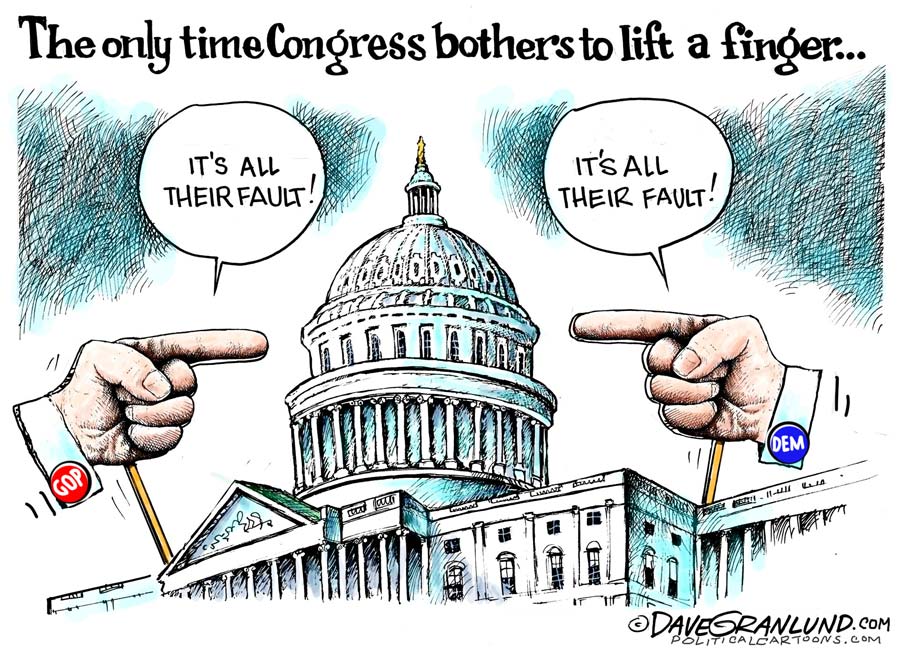
And that depends not only on whom they choose for president but what kind of Congress they elect to serve with him. Despite polls showing Democrat Joe Biden leading Trump, it's impossible now to foretell the precise results.
But it seems safe to forecast we'll end up with one of these three possible combinations:
— More of the same. President Trump, Republican Senate, Democratic House.
— A change in tone. President Biden, Republican Senate, Democratic House.
— A reversal in course. President Biden, Democratic Senate, Democratic House.
All three options reflect the likelihood that, barring unexpected changes over the next four months, the Democrats will retain the House majority they won in 2018. Everything else is uncertain.
Here is a look at what the mid-June electoral prospects could mean for the next two years.
--More of the same. Despite the current polls, the possibility remains that voters will opt for more of the same by reelecting Trump and maintaining the GOP's Senate majority.
Given the likelihood of a continued House Democratic majority, that would almost certainly mean more of the gridlock of the past two years.
To achieve that result, Trump needs to repeat the "inside straight" he scored in 2016, offsetting what is likely to be another Democratic popular vote national majority with victories in enough key states to win the required 270 electoral votes.
If he does so, the chances are likely that Senate Republicans will be able to hold off the concerted Democratic effort to regain the majority they lost in 2014. Some of the most crucial Senate races are in states like Iowa, Kansas, Kentucky, South Carolina, North Carolina and Montana, all of which Trump would likely carry in a close win.
Besides, if the president is reelected, Republicans would need only to win 50 of the 100 Senate seats, since Vice President Mike Pence could break the tie in favor of the GOP. That would mean they could only afford to lose three at most.
--A change in tone. A President Biden might find it harder to change substance than tone if he were able to narrowly unseat Trump, but the GOP kept its Senate majority. Current polls show Biden leading the presidential race, but the Senate outcome very much in doubt.
In that scenario, Biden would likely regain several states that Trump won last time from among Michigan, Pennsylvania, Wisconsin and Arizona. Current polls show him leading in all four and running at least even in Florida, North Carolina, Iowa and Ohio.
But a modest Biden victory might not be enough to trigger the net gain of three Senate seats that Democrats need for a majority, if his vice president were able to break a 50-50 Senate tie.
The most likely Democratic prospects for pickups at present are Arizona, Colorado and Montana, where polls show Democratic candidates leading GOP incumbents. But Democratic Sen. Doug Jones of Alabama is rated an underdog to whichever Republican wins the GOP primary there.
Elsewhere, Republican Sens. Susan Collins of Maine and Thom Tillis of North Carolina are rated no better than toss-ups, while Sen. Lindsey Graham of South Carolina is in a closer race than expected with Democrat Jaime Harrison.
A Biden victory would enable the reversal of many Trump national and international policies. But his ability to pass health care and immigration legislation would depend on attracting some Senate GOP backing. That would also be the case on judicial appointments since the next president is virtually certain to face one or two openings on the high court.
--A reversal in course. A decisive Biden presidential victory, in which he added such swing states as Florida, Georgia, Iowa, North Carolina and Ohio to the bare minimum to reach 270 electoral votes, would likely mean the Democratic recapture of the Senate.
A Senate majority would bolster a President Biden's chances for winning congressional approval of legislation making significant changes in health and economic policy. It would also help him win confirmation of a liberal successor to 87-year-old Supreme Court Justice Ruth Bader Ginsburg, who might retire if Democrats regain the presidency. Biden has promised to name a black woman to his first Supreme Court vacancy.
In the past, decisive elections have often seen one party winning most or all close Senate races. Besides those now considered toss-ups, a solid Democratic victory could possibly endanger current Majority Leader Mitch McConnell in presumably pro-Trump Kentucky.
It would also likely create a debate within the Republican Party over the future of Trump's policies and political influence.
Given the uncertainty of politics, it's too early to say which scenario is most likely. After all, plenty of time remains for all sorts of unlikely twists and turns between now and Nov. 3, and Trump is likely to do whatever he can to win a second term in the White House.
Carl P. LeubsdorfThe Dallas Morning News (TNS)
Carl P. Leubsdorf is the former Washington bureau chief of the Dallas Morning News.
Previously:
• 04/24/20: Congress unprepared if disaster hits it
• 11/18/19: Buttigieg gains steam in Iowa. Why he's still a bad bet
• 03/01/18: How one keystone state congressional race could topple Nancy Pelosi
• 08/31/15: Ineffective Jeb Bush now faces NH challenge from Kasich
• 03/24/14: 7 obstacles Ted Cruz must overcome
• 12/15/14: Hillary sizes up her challenge in 2016


 Contact The Editor
Contact The Editor
 Articles By This Author
Articles By This Author